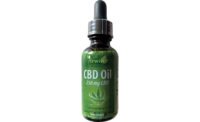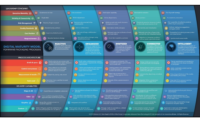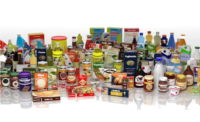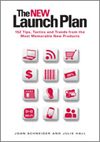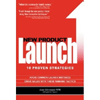The packing industry has gone through immense transformation over the last couple of years, owing to the increase in the number of start-ups across the globe, introduction of diversified category of food and non-food products, and increased demand for food and beverages during the pandemic.
The food and beverage industry has also surged during the pandemic as more and more people across the globe stocked up their supplies during lockdowns. Due to this, the packaging industry also surged exponentially. In addition, packaging has undergone transformational changes since the inception of flexible packaging as numerous manufacturers across the globe have considered its impeccable benefits not only in terms of production costs but also marketing and promotion done on the products because of the packaging. A sustainable, innovative and compelling is packaging is of paramount importance for the product manufacturers that can indigenously scale the needs, demands and sales of the particular product.
There has been a rapid shift towards the promotion of the use of sustainable items, rather than conventional plastics for packaging. This is majorly due to the growing prevalence of sustainability among people across the globe. Thus, customers these days tend to buy products that are completely made from sustainable items. Thus, the prominence of flexible packaging cannot be overstated, especially in these modern times. Flexible packaging is set to revolutionize the entire packaging industry, particularly in terms of sustainability, considering the accumulation of massive amounts of the waste and environmental deterioration caused by dumping the conventional packaging materials. This has enabled numerous manufacturers around the world to devise creative strategies to minimize the amount of packaging waste and incessantly adopt flexible packaging in their products.
Flexible packaging plays an instrumental role for a company to increase their sales of a particular product. Thus, flexible packaging also adds a great deal of marketability and value to all sorts of food and non-food products, whilst keeping all the contents in the package safe and secure. Thus, prominent companies around the world create an intriguingly impressive packaging by combining the finest qualities of film, paper, plastic, and aluminium foil to add a considerable value to each of their distinctive offerings.
Significant surge in the demand for convenience and snack foods in either small or large quantities among people is expected to increase the demand for flexible packaging in the coming years. In addition, the muti-fold energy of flexible packaging along with its environmental perks is further expected to increase its demand in the forth coming years. Barrier protection, freshness retention, printability and simplicity provided by flexible packaging are expected to create tremendous opportunities for the growth if the global flexible packaging market in the upcoming years. According to the report published by Allied Market Research, the global flexible packaging market is expected to reach $325.6 billion by 2030, growing at a CAGR of 6.2% from 2021 to 2030. More and more companies across the globe are opting for innovative flexible packaging so as to uniquely market their products and potentially increase their sales.
The entire packaging industry is gradually moving toward flexible packaging, owing to its increased efficiency and cost-effectiveness. Thus, numerous players of the market are launching their products by innovatively focusing on impressive flexible packaging. For instance, UFlex, a leading global player in flexible packaging materials and other polymer sciences, launched a set of new flexible packaging products. UFlex’s Flexible Packaging Business launched 3D bags with perforation.
An additional attachment is given along with the perforation line on the 3D bag to give a seamless tearing experience for kids. The company has also introduced a standee spout made from special grade PE and BON. This remarkable product also comes with a 21mm spout on the top that prevents spilling while pouring the tea.
Tata Consumer Products essentially considered making a gradual shift to sustainable flexible packaging for its renowned tea brand ‘Tetley Tea’. This is mainly due to the growing concerns about the increasing packaging waste across the globe. Thus, they collaborated with UFlex to supply and laminate its green tea bags in a completely sustainable and recyclable paper-based packaging. UFlex has indigenously developed an impressive packaging structure from aluminum foil and paper. The product has high gloss coatings. This paper-based packaging structure is completely environmental-friendly, eliminating the carbon dioxide emission, and hence can be recycled easily.
The trend of introducing new, innovative flexible packaging products continue to gain immense traction among companies, owing to the rising environmental concerns and growing need to eliminate non-recyclable packaging waste. For instance, BOBST, a Switzerland-based company that supplies printing and converting equipment, substrate processing, flexible packaging, folding carton and corrugated board industries, launched ‘Generation 2.0’ samples. This product will replace printing and converting equipment with better mono-material alternatives that is typically designed for recycling. Helmut Huber, COO Sales & Project Management, Brückner Maschinenbau GmbH & Co. KG, also mentioned in a statement that they envision mono-material packaging structures to be on the rise.
The ‘Generation 2.0’ samples are equipped with ultra-high full polypropylene laminated pouches that are printed in gravure and recyclable. The product also has the option of transparent AlOx (aluminum oxide) barrier layer and solvent free barrier adhesive or AluBond metallized barrier or topcoat. The product also includes a breakthrough UV Flexo amalgamated with digital inkjet printing for AluBond metallization. The product is also equipped with a full polypropylene laminated bags that provide an impeccable barrier performance. This is due to the application of solventless adhesive to create a mono-material pouch for designing. Thus, the samples include CI flexo water-based printing on full MDO-PE laminated pouches, providing a great barrier by using a high barrier solventless adhesive.
_web.jpg?1679335189)
